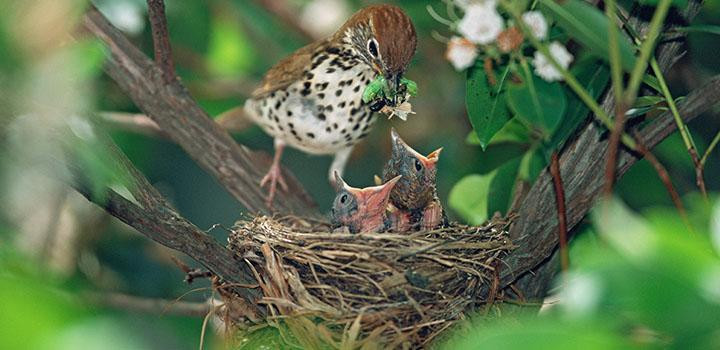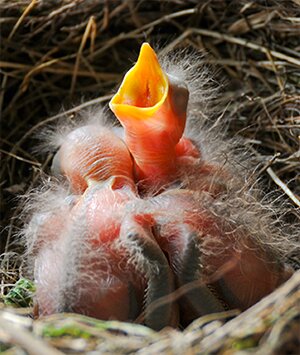
If You Find a Baby Bird
Posted by Grange Co-op on 1st Apr 2014
 1). If the bird is naked (none or few feathers), look in immediate area for a nest to pop it back in to. Birds have a poor sense of smell so it will not be rejected by its parents.
1). If the bird is naked (none or few feathers), look in immediate area for a nest to pop it back in to. Birds have a poor sense of smell so it will not be rejected by its parents.
2). If the baby is feathered and in immediate danger (in a road or near a preadator), move it to a higher branch or other cover as close as possible to where you first found it. Confine cats and dogs. A well-feathered baby is probably a fledgling and ready to leave the nest but not yet ready to fly.
3). Withdraw to a good distance and simply watch the bird, preferably through binoculars. Allow the parents, if they are present, to attend the baby. Don’t immediately assume it’s not being cared for, even if an hour passes without seeing a parent arrive.
4). Look and listen for others of its species. Constant contact calls given by fledglings serve to keep their parents apprised of their whereabouts.
5). If you see an adult of its species nearby, especially one carrying food, you may assume that it will be fed and cared for.
6). If several hours pass and you do not see an adult tending the baby, walk the area around it, looking and listening for other fledglings giving the same calls. It’s probable that this one has just become separated, and it may need to be carried over to join the rest. Head for the thickest nearby cover; parent birds lead their young toward cover soon after fledgling.
7). Resist the temptation to carry out a friendly abduction. A baby bird’s best chance for survival is always with its own parents. Plus, removing a fledgling is illegal unless you are a licensed rehabilitator. Playing a recording of the bird’s song can be a good way to summon the parents. Note where the first answer comes from and try to locate the family there. Be quite careful when doing this, though, and never overdo it—there is always the risk of disturbing other birds in the vicinity during nesting season.
8). If you are sure the parent birds are nowhere to be found, it’s time to contact a wildlife rehabilitator. State environmental departments, local wildlife officers, nature centers, some bird-feeding and supply stores and some veterinarians keep lists of people to call.
Carefully pick up the baby and put it immediately in a small cardboard box or plastic food container large enough for the bird to stand up in or move around a bit. Try to have the container ready before you pick up the bird; this will reduce stress on the animal. Use facial tissue, toilet tissue or paper toweling for padding and cover the container LOOSELY with a towel leaving a small gap at the edge for good air circulation.
Place the box in a warm, QUIET area of the house and call your local wildlife rehabilitation center for further instructions. Do not offer the bird food or water until you have spoken with them and avoid peeking at or disturbing the bird.
